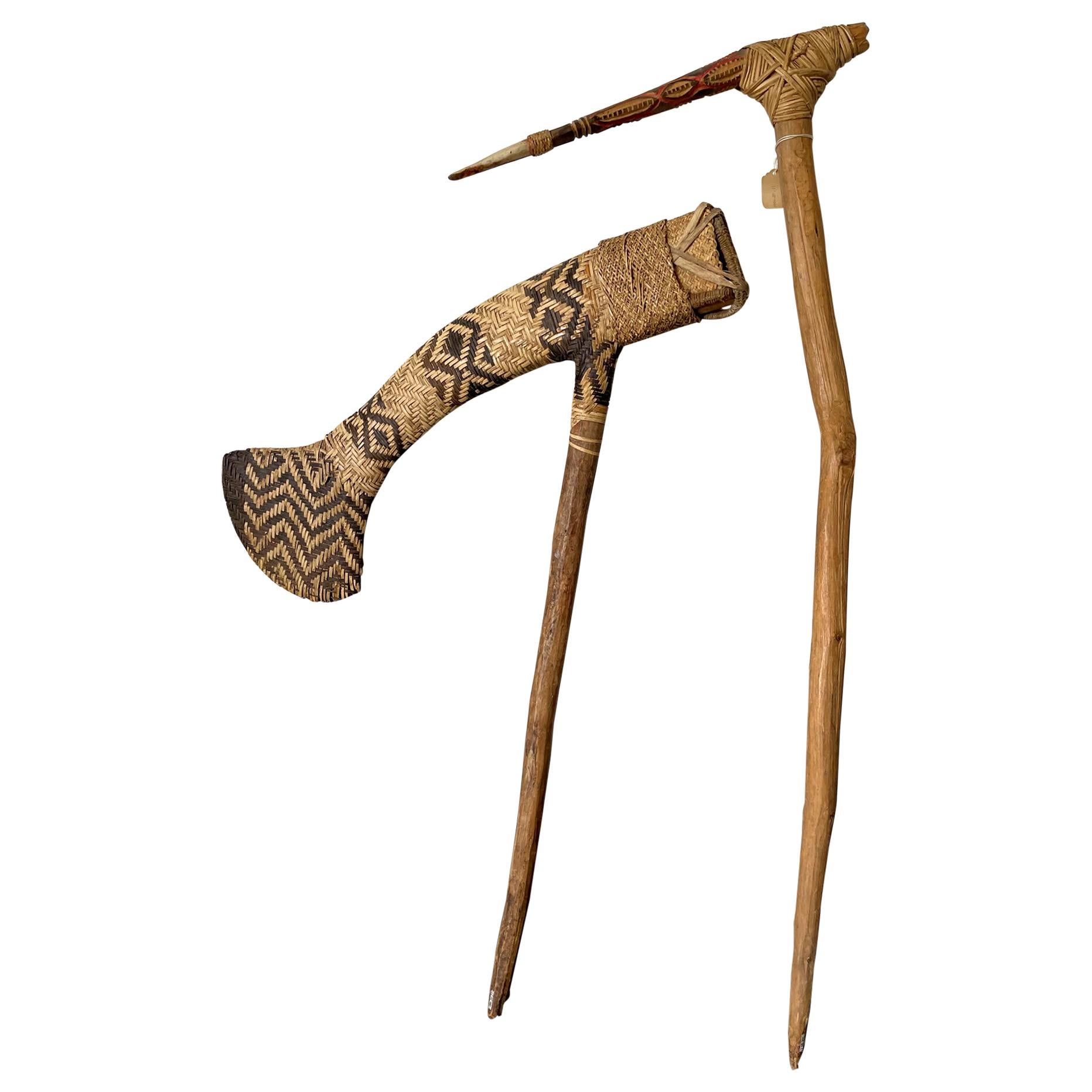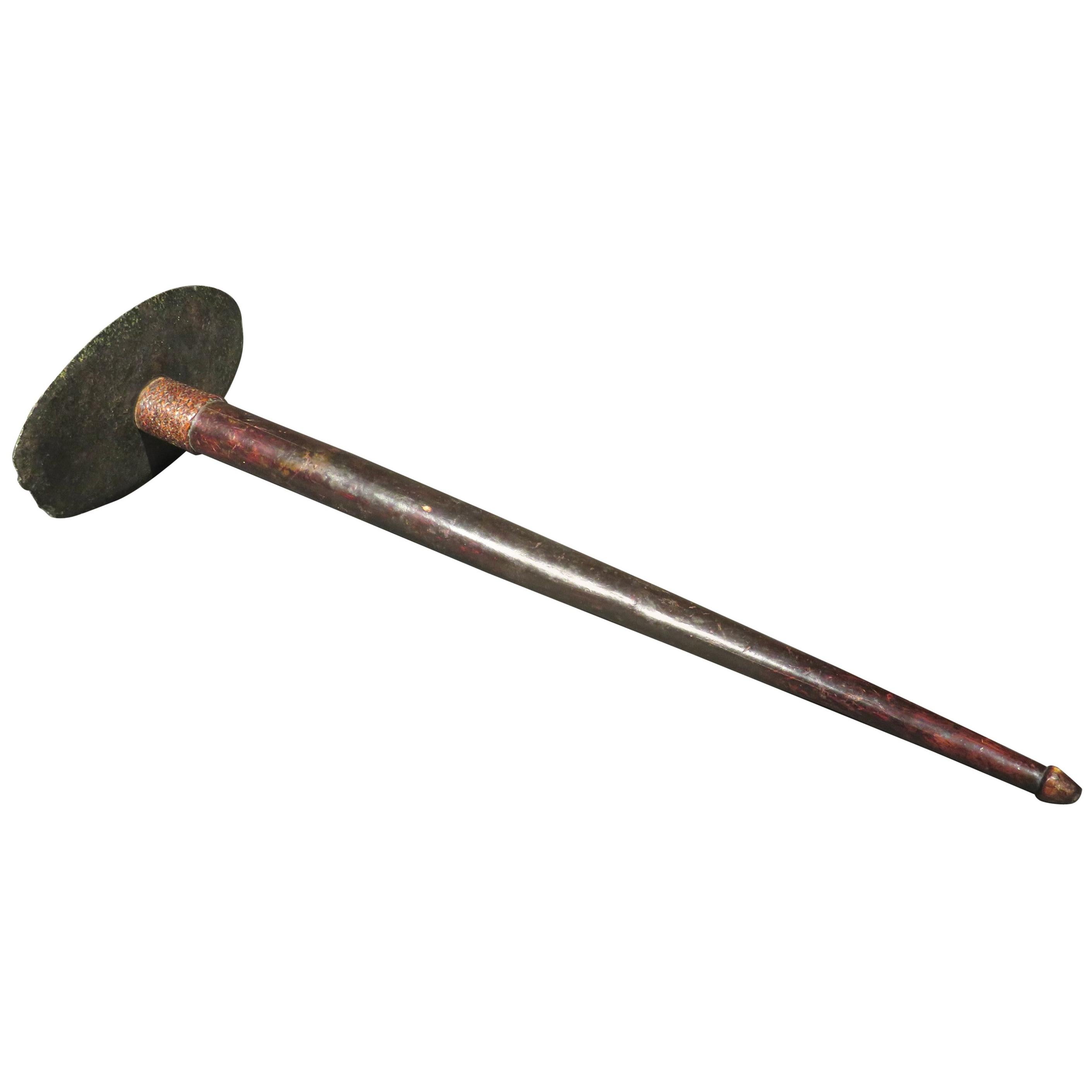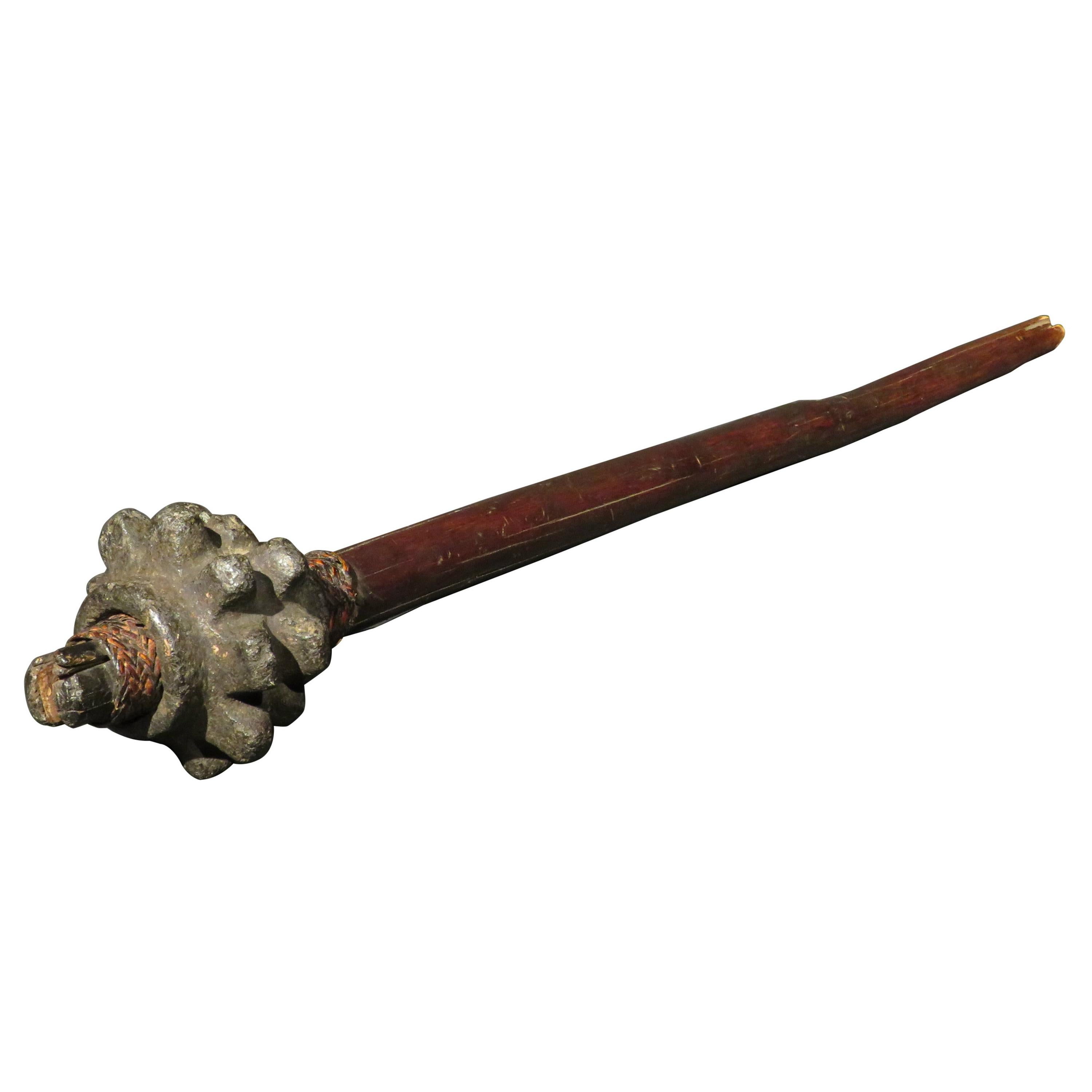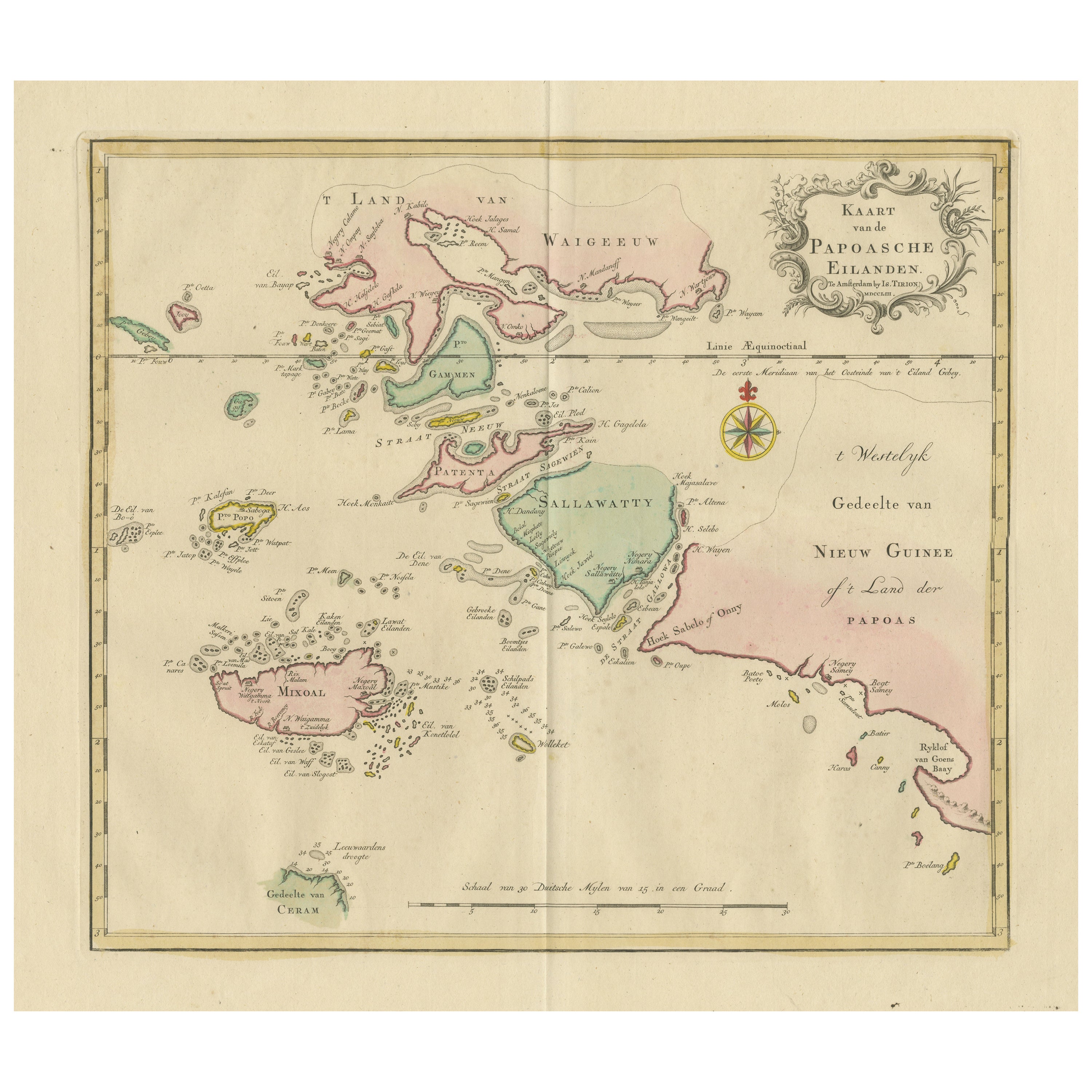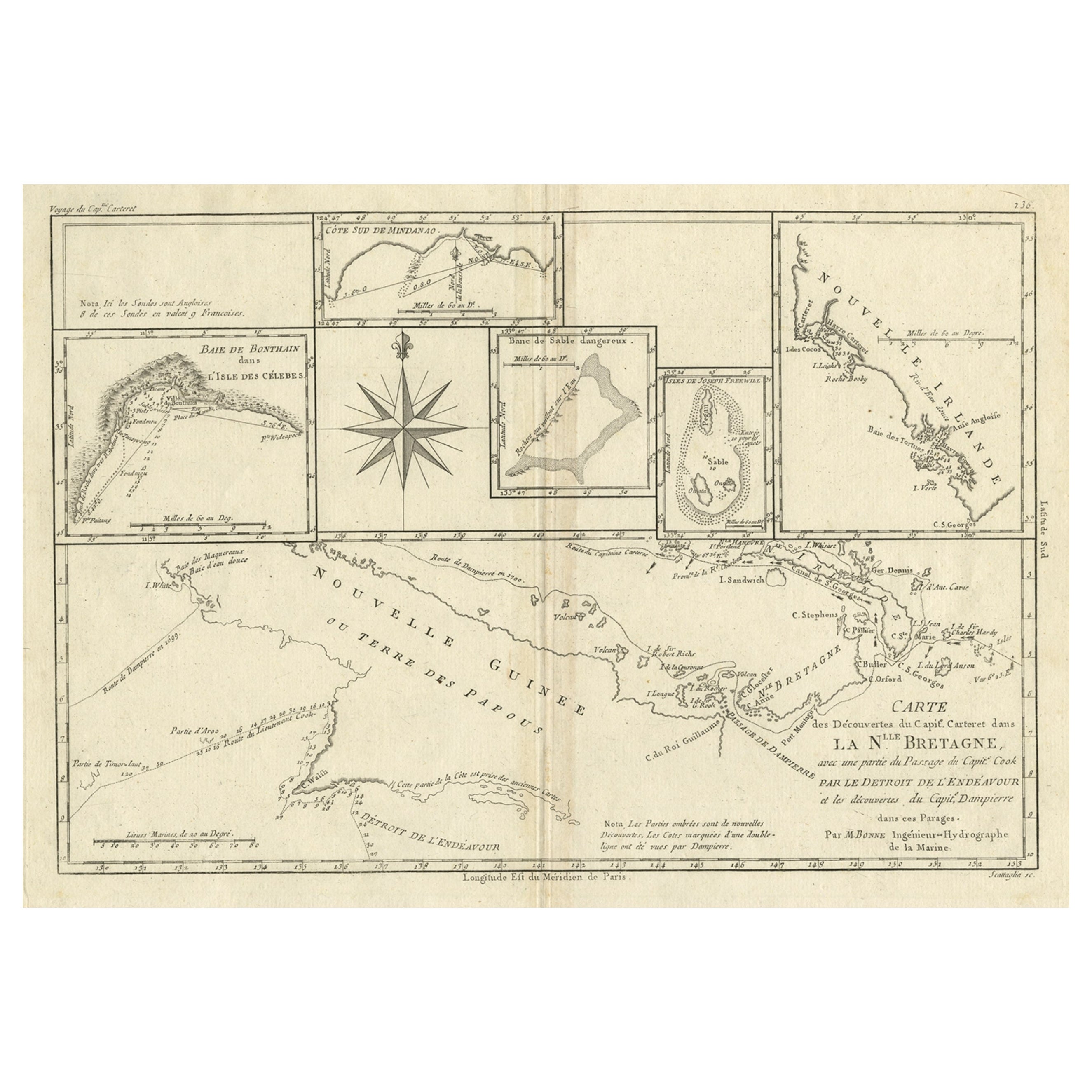Items Similar to Antique Ethnic Tribal Kina Crescent Shell Necklaces Papua New Guinea Set of 3
Video Loading
Want more images or videos?
Request additional images or videos from the seller
1 of 22
Antique Ethnic Tribal Kina Crescent Shell Necklaces Papua New Guinea Set of 3
About the Item
Antique Collectible Ethnic Tribal Folk Art Crescent Shell Pieces Choker Necklaces from Papua New Guinea.
Shell pieces cut from the gold lipped pearl oyster found off the waters of Papua New Guinea.
Their opalescent color ranges from deep gold yellow to pale yellow.
Each is pierced at the crescent point for a cord attachment enabling the owner to wear them singly or together around the neck.
One had a line of holes along the inner edge of the crescent as a decorative feature.
Highly Collectible Museum Pieces, worn by men and women rare old Kina Shell Necklaces (Huge Mother of Pearl Crescent) Pectoral Collected from the Foi Tribe (Papua New Guinea), Circa 1920’s.
From the Art collection of Marian and John Scott.
Acquisition date: 1969.
Evaluation date records: 1982.
About: For the people of the Highlands, shells were considered treasures. As they were items that came from distant shores of Papua New Guinea they were already objects used for trade. The number one source of mother of pearl wealth was and is still is from the Thursday Island, one of the chain of Island that suggests the ancient land bridge across the Torres Straits from Cape York, Australia to New Guinea. They were fashioned into objects of adornment worn on costumes, hair, nose, etc.
Of particular rarity was the gold lipped pearl shell.
References: Plumes and Arrows, Inside New Guinea, COlin Simpson, Angus and RObertson, 1968.
CATEGORY
Anthropology: Ethnography.
Tribal Kina Shell Pectoral Necklace, Pearl shell ornamentation (neck).
Kina (shell money) Oject part of Pacific Cultures Collections.
Purchased from the amazing private collection of Mark Lissauer who spent his life collecting niche ethnographic pieces.
About Mark Lissauer:
Mark Lissauer spent forty years travelling abroad for months at a time collecting ethnographic artefacts primarily from New Guinea and the islands of the West Pacific, and from Asia and Himalayan countries. Fluent in five languages and having in the course of business travelled to more than forty countries, Mark is well-known to museums and art-collectors around the world for his long career and his interesting and diverse collection of rare ethnographic material.
Mark knows the origin and symbolism of each piece. Through extensive research and more than ninety trips around the globe, Mark familiarised himself with the traditions of the various cultures he visited in order to understand the meaning of each object to its region and tribe. His home has a specialist library and several rooms are filled with tribal carvings, textiles and ethnographica.
He acquired his first tribal piece in 1948 during a business trip to Milne Bay, New Guinea, and has since documented the acquisition of some 35,000 items. Several thousands of these have been sold to important private collections and museums worldwide, including the Rockefeller Museum, the British Museum and the Musée National des Arts d’Afrique et d’Océanie, now incorporated into the Louvre Museum.
Estimator certificate of authenticity by Wayne Heathcote Tribal Art Dealer and Expert.
Heathcote has a flash gallery in Brussels, where much of the tribal art business is centred, and is an expert at Sotheby's tribal art sale, one of two it holds each year in New York.
Many of the pieces in the sale also bore his provenance, proudly stated by vendors in the catalogue.
- Dimensions:Height: 1 in (2.54 cm)Diameter: 7.5 in (19.05 cm)
- Sold As:Set of 3
- Style:Tribal (In the Style Of)
- Materials and Techniques:
- Place of Origin:Papua New Guinea
- Period:
- Date of Manufacture:1920
- Condition:Wear consistent with age and use.
- Seller Location:North Hollywood, CA
- Reference Number:
About the Seller
5.0
Platinum Seller
These expertly vetted sellers are 1stDibs' most experienced sellers and are rated highest by our customers.
1stDibs seller since 2011
2,640 sales on 1stDibs
Typical response time: 1 hour
- ShippingRetrieving quote...Ships From: North Hollywood, CA
- Return PolicyA return for this item may be initiated within 7 days of delivery.
More From This SellerView All
- Antique Ethnic Artifact Sepik River Cassowary Bone from Papua New GuineaLocated in North Hollywood, CAAntique Ethnic Artifact Sepik River Cassowary Bone from Papua New Guinea For many groups in Papua New Guinea, bone was an important medium for making tools of all types. This artifact is made from leg bone of a cassowary, a large, flightless, and extremely dangerous, bird. Cassowaries also play an important role in the mythology of groups in the Sepik River area. Though no longer used these bone artifacts are still used ceremonially. They often play important roles in male initiation and other rituals. They are also worn as personal adornment by tucking them into a band of braided fibers worn around the upper arm. Antique Ethnic Bone Cassowary Artifact with minimal carving and incised design confined to the joint end. A small hole has been drilled through from both sides of the top and presumably for the threading of a cord. The bone has been partially divided near the top and to form two prongs that project down the back of the dagger possibly allowing the user to wear is tuck into a waist band or belt. Origin Papua New Guinea Maprik Dist Area From the Art Collection of Marian and John Scott, acquired in 1962. Similar items are in display in the Timothy S. Y. Lam Museum of Anthropology. Purchased from the amazing private collection of Mark Lissauer who spent his life collecting niche ethnographic pieces. About Mark Lissauer: Mark Lissauer spent forty years travelling abroad for months at a time collecting ethnographic artefacts primarily from New Guinea and the islands of the West Pacific, and from Asia and Himalayan countries. Fluent in five languages and having in the course of business travelled to more than forty countries, Mark is well-known to museums and art-collectors around the world for his long career and his interesting and diverse collection of rare ethnographic material. Mark knows the origin and symbolism of each piece. Through extensive research and more than ninety trips around the globe, Mark familiarised himself with the traditions of the various cultures he visited in order to understand the meaning of each object to its region and tribe. His home has a specialist library and several rooms are filled with tribal carvings, textiles and ethnographica. He acquired his first tribal piece in 1948 during a business trip to Milne Bay, New Guinea, and has since documented the acquisition of some 35,000 items. Several thousands of these have been sold to important private collections and museums worldwide, including the Rockefeller Museum, the British Museum and the Musée National des Arts d’Afrique et d’Océanie, now incorporated into the Louvre Museum. Estimator certificate of authenticity by Wayne Heathcote Tribal Art Dealer and Expert. Heathcote has a flash gallery in Brussels, where much of the tribal art business is centred, and is an expert at Sotheby's tribal art sale...Category
Early 20th Century Folk Art Tribal Art
MaterialsBone
- Moroccan Berber Tribal Ethnic BraceletBy Berber Tribes of MoroccoLocated in North Hollywood, CAMoroccan Berber tribal bracelet. Moroccan tribal bracelets from the High Atlas of Morocco. Handcrafted by Berber women using Moroccan silver nickel. The ethnic Nomadic and Bedouin jewelry...Category
20th Century Moroccan Folk Art Collectible Jewelry
MaterialsMetal, Silver
- Moroccan Vintage Berber Tribal Ethnic CuffBy Berber Tribes of MoroccoLocated in North Hollywood, CAVintage Moroccan Berber tribal bracelet from the High Atlas of Morocco. Handcrafted by Berber women using Moroccan silver nickel. The ethnic Nomadic and Bedouin jewelry from the Ma...Category
20th Century Moroccan Folk Art Tribal Art
MaterialsMetal
- Stirrup Vessel Wood Hand- Carved Massim People Papua New GuineaLocated in North Hollywood, CAWood Carved Stirrup Vessel, or Pipe, Massim people, Trobriand Islands, Papua New Guinea. Hand-carved wood in the form of a large animal with a top ci...Category
Early 20th Century Papua New Guinean Tribal Sculptures and Carvings
MaterialsWood
- Pair of Moroccan Berber Ethnic Silver BraceletsBy Berber Tribes of MoroccoLocated in North Hollywood, CAPair of Moroccan Berber Tribal bracelets. Moroccan Tribal bracelets from the High Atlas of Morocco. Handcrafted by Berber women using Moroccan silver nickel. The ethnic Nomadic and Bedouin jewelry...Category
20th Century Moroccan Tribal Tribal Art
MaterialsMetal, Silver
- Vintage Collectible Jewelry Ethnic Indian Necklace FramedBy RajhastaniLocated in North Hollywood, CACollectible Jewelry Ethnic Indian necklace framed; Vintage antique ethnic tribal old silver jewelry necklace Pendant Rajasthan India. This Indian necklace is inspired by an antique Rajasthani Mughal jewelry...Category
20th Century Indian Anglo Raj Decorative Art
MaterialsMetal
You May Also Like
- Two Ceremonial Weapon from Highlands of Papua New Guinea ProvenanceLocated in Atlanta, GATwo Oceanic ceremonial weapons from PNG highlands circa 20th century. It consists of two pieces. The first is an ax with a wood shaft and a flat elongated he...Category
Mid-20th Century Papua New Guinean Tribal Tribal Art
MaterialsRattan, Wood
- Massim Ceremonial Pig with Inlaid Shell, Trobiand Islands, Papua New GuineaLocated in Leuven , BENice composition in Dense Bunukwa rainforest hardwood, inlaid shell and lime. Carved wooden pig, standing, tail straight and protrudes backwards with rows of carved zig zag...Category
Early 20th Century Papua New Guinean Animal Sculptures
MaterialsShell, Wood
- A Rare Papua New Guinea Kukukuku War Club, Eastern Highlands - Morobe ProvinceLocated in Ottawa, OntarioThis rare antique Kukukuku (pronounced "cookah-cookah") war club originates from the Morobe Province, which is a very remote area located within the Eastern Highlands of Papua New Gu...Category
Early 20th Century Papua New Guinean Tribal Arms, Armor and Weapons
MaterialsStone
- A Rare Papua New Guinea Kukukuku 'Pineapple' Stone War Club, Eastern HighlandsLocated in Ottawa, OntarioThis rare antique Kukukuku (pronounced "cookah-cookah") war club is from the remote Morobe Province located within the Eastern Highlands of Papua New Guinea. The head is carved from...Category
Early 20th Century Papua New Guinean Tribal Arms, Armor and Weapons
MaterialsStone
- Antique Map extending from the Spice Islands to the west of Papua New GuineaLocated in Langweer, NLAntique map titled 'Kaart van de Papoasche Eilanden'. Beautiful original old map extending from the Spice Islands (Sallawatty, Patenta, Gammen, Land van Waigeeuw, Popo, Misool, and part of Seram) to the western end of Papua New Guinea. Many smaller islands are detailed, and depth soundings are shown near Seram and to the east of Misool. This map originates from 'Nieuwe en Beknopte Hand-Atlas, bestaande in eene Verzameling van eenige der algemeenste en nodigste Landkaarten' by I. Tirion. Published circa 1770. Tirion was born in Utrecht in 1705. He moved to Amsterdam in 1725 and set up shop on Damrak as a book publisher. Tirion quick rose in prominence by publishing pamphlets, historical works, and, most importantly...Category
Antique Late 18th Century Maps
MaterialsPaper
- Antique Detailed Map of Papua New Guinea and the Regions to the West, ca.1780Located in Langweer, NLAntique map titled 'Carte des Decouvertes du Capite. Carteret dans La Nlle. Bretagne avec une parte du passage du Capite. Cook Par Le Detroit De L'Endeavor ...Category
Antique 1780s Maps
MaterialsPaper
